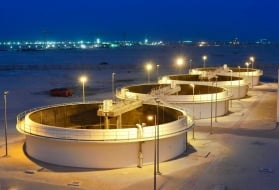the benefits of membrane bioreactors
Reading time:Microfiltration or ultrafiltration membranes can clearly replace suspended or even combined growth clarifiers, aerobic or anaerobic, for separating floc and even non-flocculated bacteria in treated water with the following advantages:
- the certainty of achieving perfect clarification regardless of the state of the sludge or of its sludge index because the membrane can even screen out non-flocculated bacteria and produce a suspended solids-free effluent (turbidity < 1NTU). At the same time, the effluent is disinfected (removal of pathogens such as helminth eggs, bacteria and even viruses when using an ultrafiltration membrane);
- having overcome the need for a clarifier, the purifying biomass concentration can be increased to between 6 and 10 g · L–1. For the equivalent F/M loading, this leads to the possibility of reducing the aeration tanks by a factor of 2 to 4 compared with the classic activated sludge tank;
- the absence of a clarifier and use of a smaller capacity tank mean that civil engineering costs and ground area covered will be markedly lower;
- the membrane ensures that certain macromolecular metabolites are screened out and gradually degraded, generating a final COD that is lower than that achieved with classic activated sludge.
All these advantages justify extra investment and energy costs, for instance, when purifying standards are very stringent (very sensitive natural environment) or when the water is to be re-used.
Bookmark tool
Click on the bookmark tool, highlight the last read paragraph to continue your reading later














